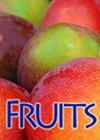Quality, typicity and potential valorization of Piper borbonense, a poorly known wild pepper from Reunion Island
IF 0.5
4区 农林科学
Q4 HORTICULTURE
引用次数: 0
Abstract
Introduction – Piper borbonense from Reunion Island is an overlooked wild pepper that remains unutilized today. The purpose of this multidisciplinary work was to study its anatomy, morphology and biochemical composition with a view to its possible commercial development. Materials and methods – We determined its biochemical composition using, notably, gas and liquid chromatography plus spectroscopic methods. Results and discussion – This pepper differs from Piper nigrum through the pedicel, which forms an integral part of the peppercorn. It can be distinguished from other tailed peppers, such as Piper cubeba and wild peppers from Madagascar, through its ovoid shape. Its compounds of interest, essential oil and piperine, are mostly present in the perisperm. Starch (41% db) is its main constituent. Piper borbonense has low pungency (piperine content: 0.2% db) and high aroma potential (essential oil content: 9.8% db), distinguishing it from Piper nigrum and bringing it closer to the tailed peppers, such as Piper cubeba and the wild peppers of Madagascar. Its aroma composition, very rich in monoterpenes, notably limonene (27%), can be considered as that of a good quality pepper. Conclusion – The typicity of Piper borbonense affords an interesting potential for domestication and valorization.来自留尼旺岛的一种鲜为人知的野生辣椒——胡椒的质量、典型和潜在价值
来自留尼旺岛的胡椒是一种被忽视的野生辣椒,至今仍未被利用。这项多学科工作的目的是研究其解剖、形态和生化组成,以期其可能的商业开发。材料和方法-我们使用气相色谱和液相色谱加光谱法测定其生化成分。结果和讨论-这种胡椒通过花梗与胡椒不同,花梗是胡椒的一个组成部分。它的卵形可以与其他有尾的辣椒区分开来,比如马达加斯加的胡椒和野生辣椒。它的化合物,精油和胡椒碱,主要存在于外胚层中。淀粉(41% db)是其主要成分。波波南胡椒具有低辛辣(胡椒碱含量:0.2% db)和高香气潜力(精油含量:9.8% db),使其与黑椒(Piper nigrum)区别开来,更接近于尾椒,如立方胡椒(Piper cubeba)和马达加斯加的野生辣椒。其香气成分,非常丰富的单萜烯,特别是柠檬烯(27%),可以认为是一个好品质的辣椒。结论:波波鼻Piper borbonense的典型性提供了一个有趣的驯化和增殖潜力。
本文章由计算机程序翻译,如有差异,请以英文原文为准。
求助全文
约1分钟内获得全文
求助全文
来源期刊

Fruits
HORTICULTURE-
CiteScore
1.10
自引率
0.00%
发文量
22
审稿时长
>12 weeks
期刊介绍:
The scope of Fruits - the International Journal of Tropical and Subtropical Horticulture includes:Fruits - The International Journal of Tropical and Subtropical Horticulture
-crop production and cropping systems,
-breeding,
-genetics and
-the release of genetic material adapted to tropical and subtropical environments,
management,
-storage and market supply of underutilized crops,
-integrated management of pests and diseases,
-clinical relevant effect of tropical and subtropical horticultural species,
-peri-urban and urban tropical crop production,
-sustainable water and input use,
-capacity building in horticulture,
-value chain development in developing countries,
-seed science and agricultural engineering.
Fruits, The International Journal of Tropical and Subtropical Horticulture, deals with such crops as vegetables, fruits, spices, ornamentals and medicinal plants growing in the tropical and subtropical environment.
 求助内容:
求助内容: 应助结果提醒方式:
应助结果提醒方式:


